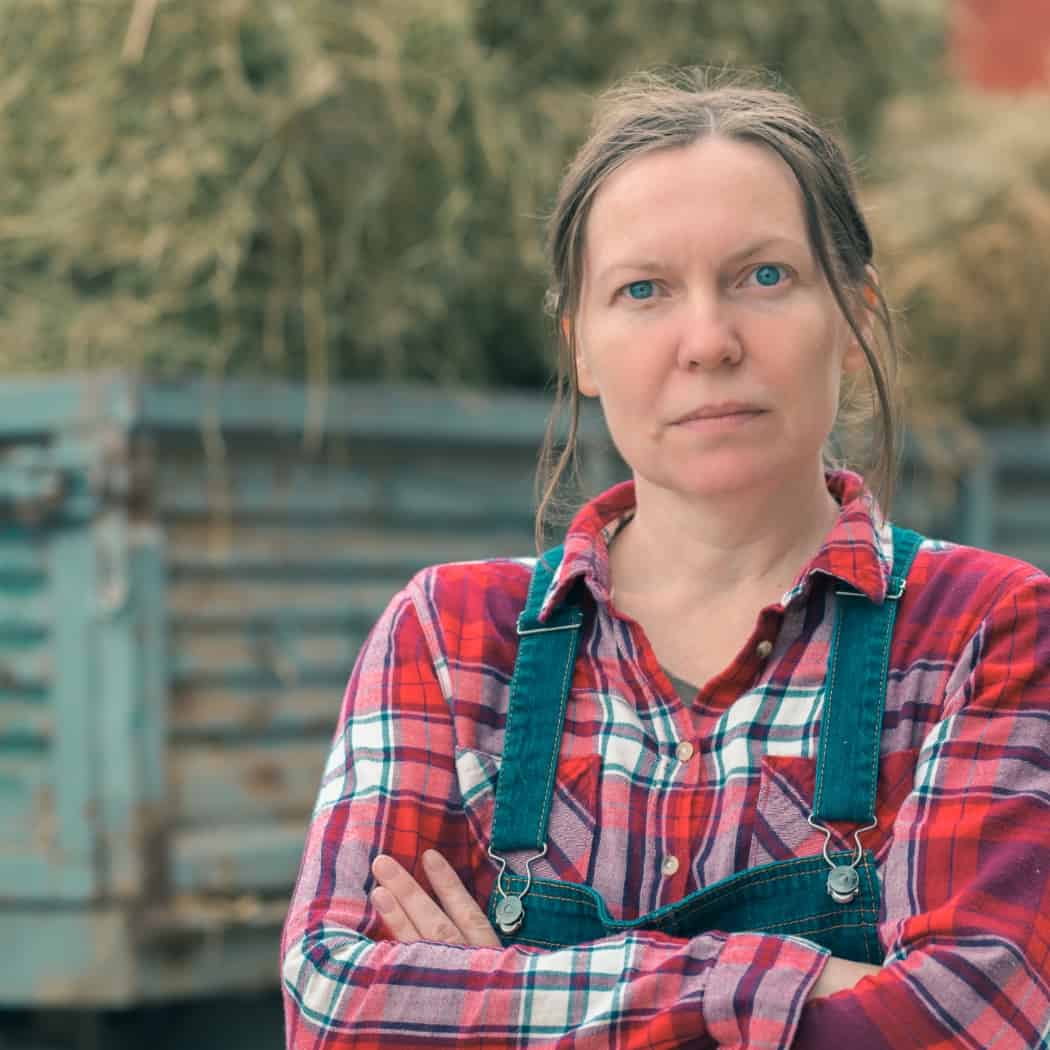Child Hunger in America
- Nearly 14 million children are estimated to be served by Feeding America, over 3 million of which are ages 5 and under. (I)
- According to the USDA, over 16 million children lived in food insecure (low food security and very low food security) households in 2010.
- More than 20% of the child population in 37 states and D. C. lived in food insecure households in 2010. The District of Columbia (30.7%), Oregon and Arizona (both 29.0%) had the highest rates of children in households without consistent access to food. (III)
- In 2010, the top five states with the highest rate of food insecure children under 18 are the District of Columbia, Oregon, Arizona, New Mexico, and Florida. (III)
- In 2010, the top five states with the lowest rate of food insecure children under 18 are North Dakota, New Hampshire, Virginia, Minnesota, and Massachusetts. (III)
- Proper nutrition is vital to the growth and development of children. 62 percent of client households with children under the age of 18 reported participating in the National School Lunch Program, but only 14 percent reported having a child participate in a summer feeding program that provides free food when school is out. (I)
- 54 % of client households with children under the age of 3 participated in the Special Supplemental Nutrition Program for Women, Infants and Children (WIC). (I)
- 32 % of pantries, 42 percent of kitchens, and 18 percent of shelters in the Feeding America network reported “many more children in the summer” being served by their programs. (I)
- In 2010, 16.4 million or approximately 22 percent of children in the U. S. lived in poverty. (IV)
- Research indicates that hungry children do more poorly in school and have lower academic achievement because they are not well prepared for school and cannot concentrate. (V)
- In fiscal year 2009, 48 percent of all SNAP participants were children. (VI)
- During the 2010 federal fiscal year, 20.6 million low-income children received free or reduced – price meals through the National School Lunch Program. Unfortunately, just 2.3 million of these same income-eligible children participated in the Summer Food Service Program that same year. (VII)
Show Sources
- Rhoda Cohen, J., Mabi, F., Potter, Z, Zhoa, Mathematica Policy Research, Feeding America. Hunger in America 2010. February 2010.
- Coleman-Jensen, A., Nord, Mark, M. Andrews, S. Carlson. United States Department of Agriculture/Economic Research Service. Household Food Security in the United States in 2010
- Feeding America. Gundersen, C., Waxman, E., Del Vecchio, T., Satoh, A., & Lopez-Betanzos, A. Map the Meal Gap 2012; Child Food Insecurity. (2012).
- DeNavas-Walt, Carmen, B. D. Proctor, C. H. Lee. U. S. Census Bureau, Income, Poverty, and Health Insurance Coverage in the United States: 2010. September 2011.
- Cook, John. Feeding America. Child Food Insecurity: The Economic Impact on our Nation. Executive Summary. May 2009.
- Leftin, Joshua, Gothro, A., Eslami, E., USDA, Office of Analysis, Nutrition and Evaluation. Characteristics of Supplemental Nutrition Assistance Program Households: Fiscal Year 2009. October 2010.
- USDA, FNS. National School Lunch Program. Participation and Lunches Served. Data preliminary as of September 2011.
The Working Poor
One of the most common misconceptions is the assumption that if someone is hungry, that means they do not have a job and are living on the streets. What most people do not understand is that anyone can experience hunger. It is a silent epidemic that affects 49 million Americans. According to the US Census Bureau, in 2010, 21 million people lived in working-poor families. This translates into nearly 9.9 percent of all American families living below 100 percent of poverty have at least one family member working (I). In fact, 36 percent of client households served by Feeding America network have one or more adults working (II).
- Female-headed households were more than twice as likely to be among the working poor as male-headed households in 2008.
- Among families with at least one member working at least half a year, families with children were 4 times more likely than families without children to live in poverty in 2008. (III)
- According to a survey on hunger and homelessness conducted by the United States Conference of Mayors, 88.5% of cities participating in the survey cited unemployment as one of three major causes of hunger in their city. (IV)
- Thirty-nine percent of all adults served by Feeding America have completed high school or equivalent diploma with no further education beyond high school. (II)
- 34 percent of all households served by Feeding America have had to choose between paying for food and paying for medicine or medical care. (II)
- Sixty-five percent of working families that received SNAP were single-parent families (V)
Show Sources
- Rhoda Cohen, J., Mabi, F., Potter, Z, Zhoa, Mathematica Policy Research, Feeding America. Hunger in America 2010. February 2010.
- Coleman-Jensen, A., Nord, Mark, M. Andrews, S. Carlson. United States Department of Agriculture/Economic Research Service. Household Food Security in the United States in 2010
- Feeding America. Gundersen, C., Waxman, E., Del Vecchio, T., Satoh, A., & Lopez-Betanzos, A. Map the Meal Gap 2012; Child Food Insecurity. (2012).
- DeNavas-Walt, Carmen, B. D. Proctor, C. H. Lee. U. S. Census Bureau, Income, Poverty, and Health Insurance Coverage in the United States: 2010. September 2011.
- Cook, John. Feeding America. Child Food Insecurity: The Economic Impact on our Nation. Executive Summary. May 2009.
- Leftin, Joshua, Gothro, A., Eslami, E., USDA, Office of Analysis, Nutrition and Evaluation. Characteristics of Supplemental Nutrition Assistance Program Households: Fiscal Year 2009. October 2010.
- USDA, FNS. National School Lunch Program. Participation and Lunches Served. Data preliminary as of September 2011.
Seniors
As a nation, we have a special responsibility to vulnerable populations such as the elderly. Older Americans have built the economy and national infrastructure from which we now benefit. It is morally reprehensible that the people that built this country should suffer hunger in a land of plenty, which they helped to create. Food insecurity among this vulnerable population is especially troublesome because they have unique nutritional needs and may require special diets for medical conditions. Additionally, older Americans have a continuum of need based on their mobility and ability to prepare meals. As a result, different nutrition interventions are required to reach seniors throughout this continuum of need.
The following are some of the key findings from Feeding America’s Hunger in America 2010 regarding the elderly in our country (I).
- Nearly 3 million elderly persons are served by Feeding America each year. 18.6 percent of client households have at least one member who is age 65 or over, and 52 percent of these households are food insecure. (An estimated 1.2 million households)
- Among all clients served by Feeding America, 8 percent were seniors age 65 or over while 14.2 percent of adult clients interviewed at emergency feeding programs were 65 or older.
- Among all client households with at least one senior, 10.5 percent use senior brown bag programs, 16.5 attend senior nutrition sites (such as senior centers that serve lunch) and 6.6 percent receive home-delivered meals or meals-on-wheels.
- 30 percent of client households with seniors indicated that they have had to choose between food and medical care and 35 percent had to choose between food and paying for their utilities/AC/heat.
Other Facts:
- In 2010, 7.9 percent of households with seniors (2.3 million households) were food insecure. (II)
- In 2010, 9.0 percent of the elderly lived below the poverty line. (3.5 million older Americans) (III)
- In 2009, nearly 9 million people over the age of 50 lived in food insecure households. (IV)
- In 2009, nearly 4 million people over the age of 60 lived in food insecure households. (IV)
- In 2010, under the Supplemental Poverty Measure, seniors make up 12.7% of people in poverty as compared with 7.6% under the official measure. (V)
- In 2010, under the Supplementary Poverty Measure, medical out of pocket expenses (MOOP) nearly double the poverty rate among seniors. (8.6% without MOOP, 15.9% with) (V)
- The number of food insecure seniors is projected to increase by 50% when the youngest of the Baby Boom Generation reaches age 60 in 2025. (VI)
- Seniors are more likely to be food insecure if they live in a southern state, are younger, live with a grandchild, are African American, or are Hispanic. (VI)
- Elderly households are much less likely to receive help through the Supplemental Nutritional Assistance Program (SNAP) than non-elderly households, even when expected benefits are roughly the same. (VI)
- Seniors require greater consideration towards their health and medical needs that can become compromised when there is not enough food to eat. A study which examined the health and nutritional status of seniors found that food insecure seniors had significantly lower intakes of vital nutrients in their diets when compared to their food secure counterparts. In addition, food insecure seniors were 2.33 times more likely to report fair/poor health status and had higher nutritional risk. (VII)
- For seniors, protecting oneself from food insecurity and hunger is more difficult than for the general population. For example, a study that focused on the experience of food insecurity among the elderly population found that food insecure seniors sometimes had enough money to purchase food but did not have the resources to access or prepare food due to lack of transportation, functional limitations, or health problems. (VIII)
Show Sources
- Rhonda Cohen, J. Mabi, F. Potter, Z. Zhao. Mathematica Policy Research. Feeding America. Hunger in America 2010. February 2010.
- Coleman-Jensen, A, Nord, M., Andrews, M.& Carlson, S. United States Department of Agriculture/Economic Research Service. Household Food Security in the United States in 2010. (ERR-49) September 2011.
- DeNavas-Walt, Carmen, B. D. Proctor, J. Smith. U.S. Census Bureau. Income, Poverty, and Health Insurance Coverage in the United States 2010. September 2011.
- Zilak, J. & Gundersen, C. (2011, August). Food Insecurity Among Older Adults. A report submitted to AARP Foundation.
- The Research Supplementary Poverty Measure: 2010. (2011) U.S. Census Bureau.
- Zilak, J. & Gundersen, C. (2009, September). Senior hunger in the United States: Differences across states and rural and urban areas. University of Kentucky Center for Poverty Research Special Reports. Retrieved October 7, 2010. http://www.ukcpr.org/Publications/seniorhungerfollowup.pdf. United States Department of Agriculture/Office of Analysis, Nutrition, and Evaluation. Elderly Participation and the Minimum Benefit. November 2002.
- Lee, J.S., Frongilo, Jr. EA. Nutrition and health consequences are associated with food insecurity among U. S. elderly persons. J. Nutr. 131: 1503-1509. 2001.
- Wolfe, WS, Frongilo, EA, Valois, P. Understanding the experience of food insecurity by elders suggests ways to improve its measurement. J. Nutr. 133: 2762-2769. 2003.
Rural Communities
Rates of food insecurity, the statistical measurement of hunger or near hunger, among rural households is generally lower than urban households, but slightly higher than the national average. The irony is that many of these food-insecure households are in the very rural and farm communities whose productivity feeds the world and provides low-cost wholesome food for American consumers.
Challenges facing rural areas differ from metro/urban areas in several significant ways: (I)
- Employment is more concentrated in low-wage industries. (II)
- Unemployment and underemployment are greater.
- Education levels are lower.
- Work-support services, such as flexible and affordable childcare and public transportation, are less available.
- The rural marketplace offers less access to communication and transportation networks.
- Offers companies less access to activities that foster administration, research and development.
- The fact that so many people need to turn to a food bank or church pantry just to eat in the very same communities where the food is raised is a sad reminder of how much more needs to be done.
Other Facts:
- 14.7% of rural households are food insecure, an estimated 3 million households. (III)
- Compared to all regions, the South continues to have the highest poverty rate (under 100 percent of poverty) among people in families with related children under 18 living in rural areas (24.5 percent) and living in cities and suburbs. (19.7 percent) (III)
- Among all people in female-headed families with related children under 18 years, 50.7 percent were poor in rural areas compared to 35 percent in suburbs. (IV)
Show Sources
- USDA. Economic Research Service. Leslie A. Whitener, R. Gibbs, and L. Kusmin. Rural Welfare Reform: Lessons Learned. Amber Waves. June 2003.
- USDA. Economic Research Service. Robert Gibbs. L. Kusmin. Low-Skill Employment and the Changing Economy of Rural America. ERRR-10. October 2005.
- USDA. Economic Research Service. Coleman-Jensen, A., Nord, M., Andrews, M and Carlson, S. Household Food Security in the United States in 2010. September 2011.
- U. S. Census Bureau, Current Population Survey, 2009 Annual Social and Economic Supplement, POV43: Region, Division and Type of Residence- Poverty Status for People in Families with Related Children Under 18 by Family Structure: 2008. Below 100% of Poverty-All Races.




